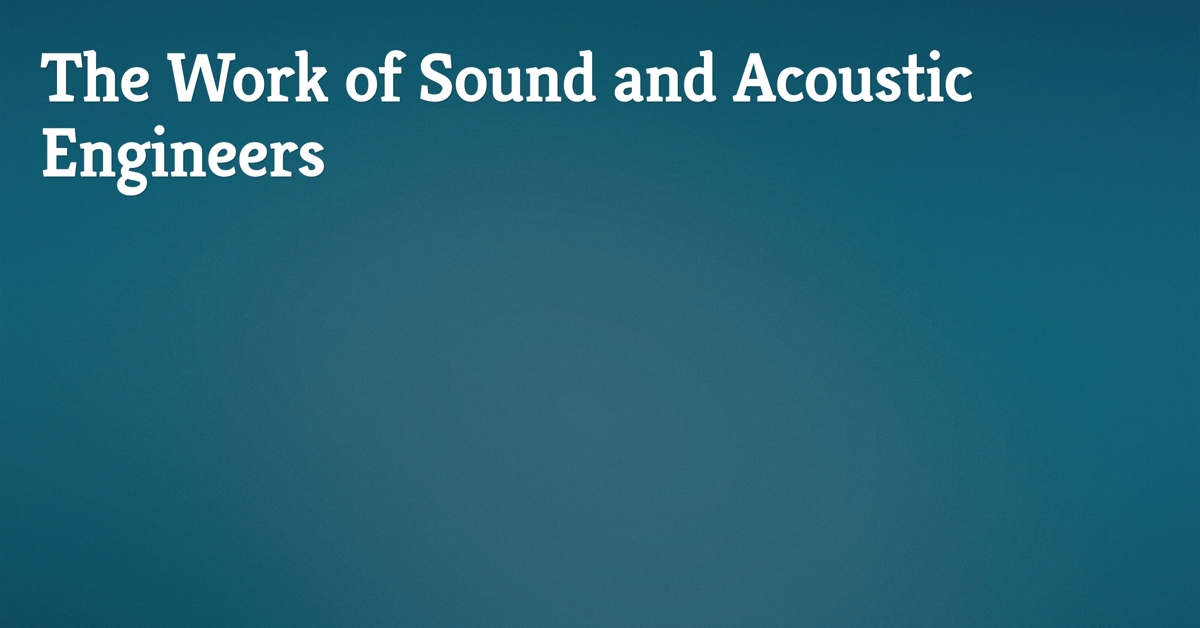The Work of Sound and Acoustic Engineers
engineers sound acoustic

Sound and acoustic engineers apply the science of sound and vibration to the process of design and construction.
The field of sound and acoustic engineers is a specialized one centered around noise reduction. The work of sound and acoustic engineers is mainly to reduce unwanted noise. Thus, the sound and acoustic engineers work towards noise control. The sound and acoustic engineers work by manipulating sound vibrations using techniques that measure noise.
The work of sound and acoustic engineers overlaps with other engineering disciplines. The fields of civil engineering, electrical and mechanical engineering find common ground with sound and acoustic engineers.
The principle of absorption is used in the noise reduction process. When sound waves reflect off surfaces some of it is absorbed. Sound and acoustic engineers design structures and space in such a way to either reduce or increase how sound is heard depending on the spaces intended purpose.
Different Sound Phenomena
Diffraction is another phenomenon which is used in the work of sound and acoustic engineers. This is a phenomenon where the sound waves are bent around small obstacles and then again spread out by passing them through a small opening.
Reverberation is a process when sound echoes linger. That is also used in the work of acoustics by the sound and acoustic engineers. Here the sound waves are bent when they pass through a different medium.
Controlling Sound Levels
Sound and acoustic engineers seek to control the sounds within buildings. The process that is used by sound and acoustic engineers is known as architectural acoustics. This process focuses on reducing the level of noise that travels between the walls and within a space.
The rooms are designed to reduce the sound reverberation with the help of sound and acoustic engineers.
Room and Building Designs
Rooms are designed with the help of sound and acoustic engineers to help reduce the sound reverberation. Sound and acoustic engineers control the building features to see how long it would take for the sound to fade. They also work to improve speech clarity in buildings or rooms.
There are large auditoriums that take up the service of sound and acoustic engineers. These need to be designed by the sound and acoustic engineers in such a way that sound gets amplified as it travels across the room. The work of sound and acoustic engineers is needed in concert halls and public meeting rooms. The techniques of the sound and acoustic engineers are required in such places where sound systems and microphones are used.
Urban Planning
The work of the sound and acoustic engineers is not confined to buildings alone. There are urban planners who enlist the services of sound and acoustic engineers. They help in the design of highways and airports in such a manner that traffic noise is reduced. Even residential areas need to be developed with the help of the advice of acoustic and sound engineers.
Noise Reduction in Cities
Sound and acoustic engineers help to design barrier walls that reduce the reverberation of sound. The work of sound and acoustic engineers can be seen in highways and other urban areas. There are buffer zones that are set up by the sound and acoustic engineers for noise control. There are industrial and commercial zones planned as per the advice of sound and acoustic engineers to control noise pollution levels.